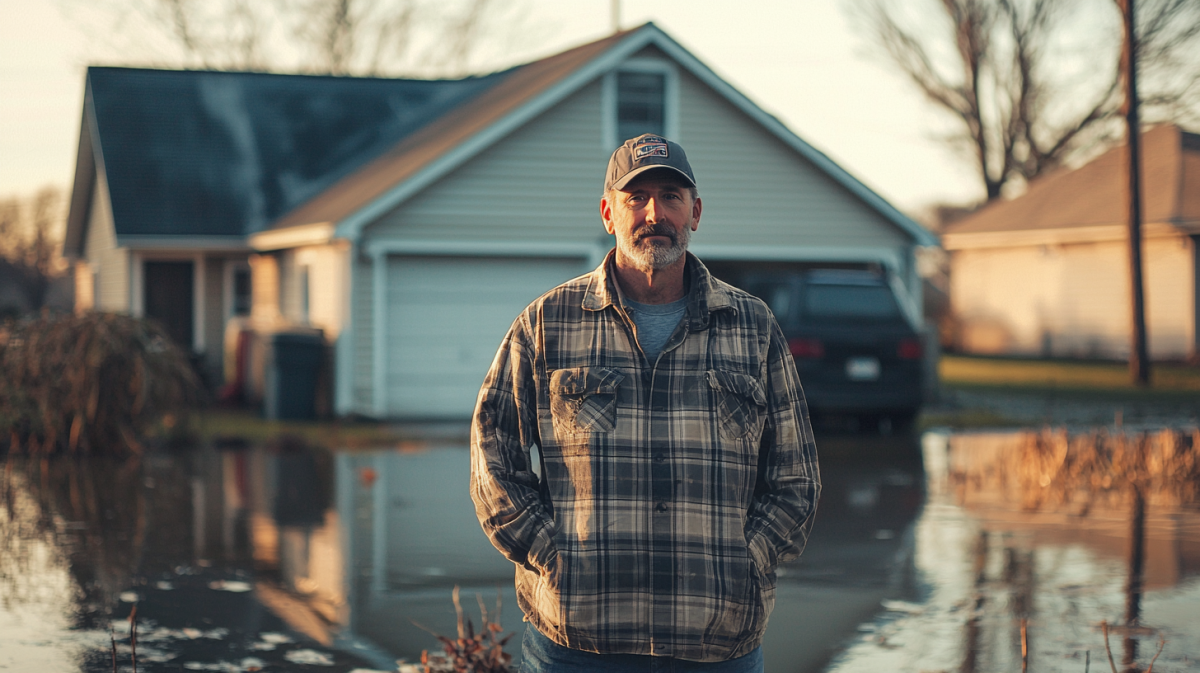No matter what happens tonight (or tomorrow or next week ... or even next month), one thing is certain right now ... uncertainty. I'm in a lot of different "prepper groups" and the one thing that shocked me is how many people are just regular ordinary folks like you and me. We see images in movies of the radical right-wing extremists building bunkers under their homes filled with guns and ammo, but practical prepping is far more important. It starts simply with having a plan of what you need to do to keep your family safe and what obstacles you plan to prepare to survive. Let's take a look at some key items that you will need to prepare for what might come next.
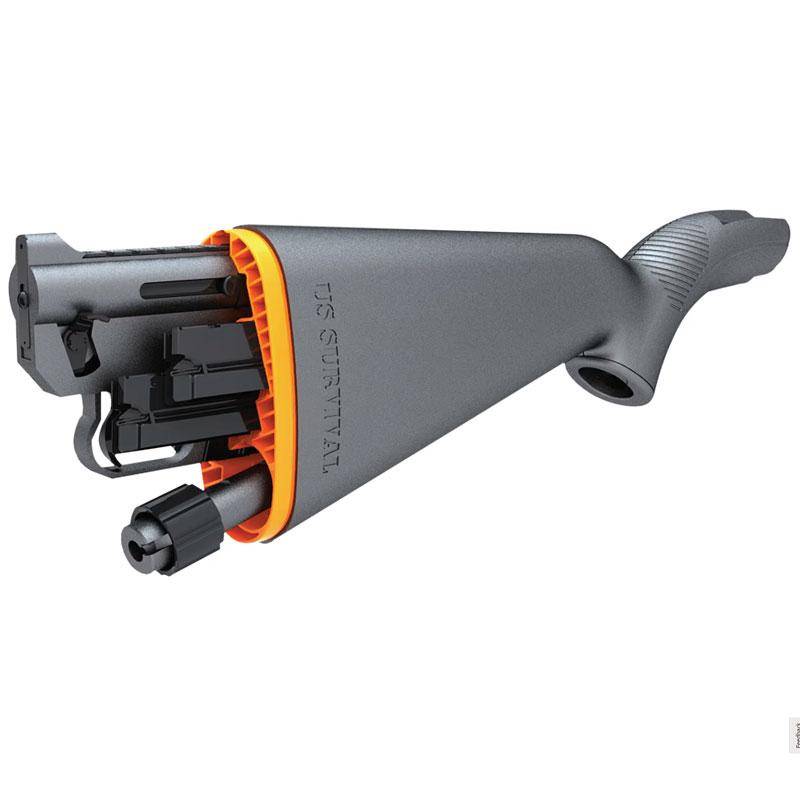
Guns and Ammo Aren't The Answer Without Training
With that being said, there are benefits to having a firearm in your home. Whether it's for personal defense or for hunting food in an emergency, I really like the Henry AR-7 .22 LR survival rifle because it's compact, easy to store, and if needed, I can carry it with me in a backpack or the trunk of my car.
I know a lot of folks that call themselves "preppers" like to be all flashy with fancy weapons. Let's face it though ... guns aren't going to save you if things really go sideways. In fact, according to a University of Washington School of Public Health survey - only three in five gun owners in the United States have received any formal gun training. That's shocking, but not surprising.
To overcome this deficit, it's essential for anyone who owns a gun to have formal training on proper operation, safety, and maintenance. For me and my home, this includes making sure that both my wife and I are proficient with any firearms that we have in the house. I don't want either of us making a mistake or worse, not being able to use it properly should that time come where we need to defend ourselves from an invader.
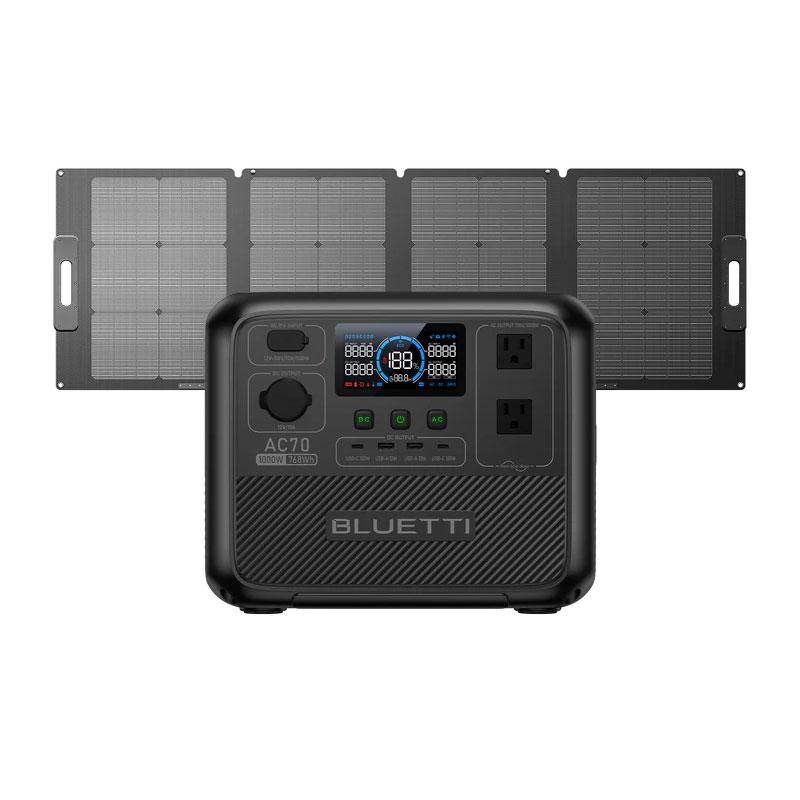
Keeping The Power Going
I'm a big fan of solar power stations as a much more sustainable and scalable option compared to gas or diesel. In an ideal situation, I'd have both. However, from a practical perspective, if the SHTF then supply chains will be interrupted and petro-fuels will skyrocket in price as the scarcity increases.
We're not just talking about keeping the fridge cool and your phones charged. Solar power stations can also keep your car charged as well.
Obviously, there's variables here that depend greatly on weather, ambient temperature, number of solar panels and size of your battery pack, but it can be done ... just slowly.
Luckily there's a bunch of different options for cost effective, portable solar generators these days including the AC70 from Bluetti, Solar Generator 600 Kit from Biolite, and the Rallye 600 Mini Ultra from Runhood that is the newer version of the generator kit I have at home. Personally I really like the Runhood system because you can swap the battery cells in and out so you can charge stuff up and have backups for your backup ready to go!
Just as important as it is to have power generation and storage though is keeping your power station operating smoothly.
Optimal Panel Care and Cleaning
Clean your solar panels monthly using distilled water and a microfiber cloth to remove dust, pollen, and bird droppings, avoiding harsh chemicals or abrasive materials. Perform cleaning during early morning or evening hours to prevent water spotting and thermal shock to the panels. In winter, promptly remove snow using a soft-bristled brush and regularly check for debris that could create performance-reducing shade.
Battery Health Management
Store your power station's batteries at 20-80% charge in a temperature-controlled environment between 50-85°F (10-29°C) to maximize longevity. For rarely used units, perform a complete charge-discharge cycle every three months to maintain battery health and ensure accurate charge readings. Never allow batteries to remain fully discharged, as this can permanently damage their capacity and reduce overall system reliability.
Regular Testing and System Checks
Run essential appliances off your power station monthly for at least 30 minutes to verify proper operation and system capacity. Inspect all cable connections for wear or corrosion, and test inverters under load to confirm proper functionality. Keep a maintenance log tracking dates, actions taken, and performance metrics to identify potential issues before they become problems.
APlugPro Can Keep Plugs Clean
When you need to plug in your generator, the last thing you want is for your outlet to trip due to moisture. Advanced Plug Protection (APlugPro.com) makes weatherproof shields and gasket covers designed to stop rain and melting snow from getting into outdoor extension cord plugs and tripping GFCIs. They are a must-have for bad weather prep, camping, tailgating, landscaping, boating and more. These soft, pliable shields are a cost-effective way to save you hours of time and frustration.
APlugPro is made in the USA and their products are available online at www.aplugpro.com and Amazon.
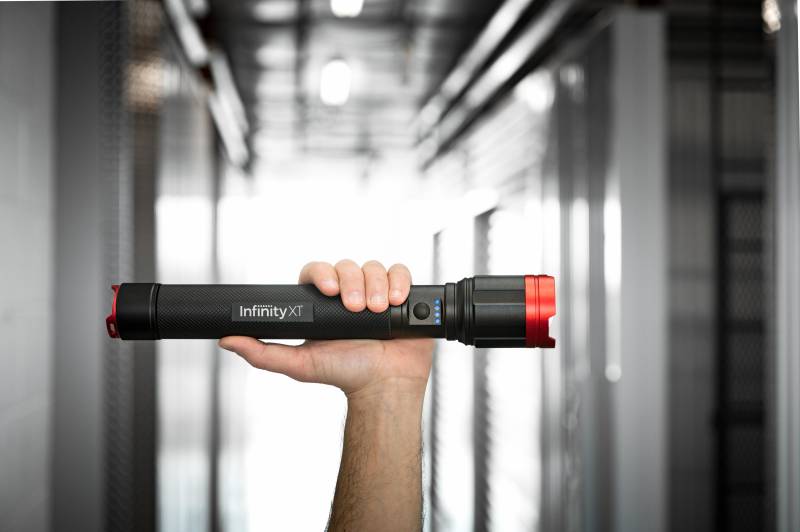
Every Home Needs A Great Flashlight
This might seem like a "duh!" moment but I feel like anyone that is making the effort to prepare for something unknown should have at least one really good flashlight. Myself, I have several different flashlights for different purposes stashed around the house and I always have one in the car as well.
Flashlight Buying Guide Tips
- Choose a flashlight with a minimum output of 500 lumens for minimum emergency illumination, an IPX7 or higher waterproof rating for all-weather reliability, and construction from aircraft-grade aluminum or similarly durable materials is also essential.
- Look for multiple lighting modes including a low-power setting for extended runtime as well as a high-power mode for maximum visibility, plus an SOS or strobe feature for emergencies.You will also want to have a feature that allows for variable focus options so you can shine a tight beam into the distance or flood a smaller area such as a room or while searching in your trunk.
- Ensure the flashlight uses readily available battery types (like AA, CR123, or 18650) and/or includes built-in rechargeable capabilities with USB charging for convenience. I prefer USB-C charging because it is faster and it is also standardized so that I don't need to have a special charging cable just for my flashlight.
- Select a model with a minimum runtime of 8 hours on medium settings to last through extended power outages, and verify it includes a battery level indicator to prevent unexpected power loss.
- Prioritize flashlights with impact resistance of at least 1.5 meters, a beam distance of 200+ meters for long-range visibility, and a reliable switch design that won't activate accidentally in storage.
Infinity X1 Flashlight
If you are ever caught in a dangerous hurricane, it is vital to keep an emergency kit on deck. Building your kit will include a flashlight, extra batteries, blankets, and a first aid kit. Out of that list, a flashlight can be just the thing that saves your life and keeps you from going missing. If it is a quality flashlight like the Infinity X1 5000L Dual Power Focusing Flashlight, it can be used to light your way out of dark debris, call for help by shining its bright light into the sky, use it to break down a door or object in your way, and even charge a phone to call for help. It can be charged via dry cell batteries or its dual power rechargeable battery pack.
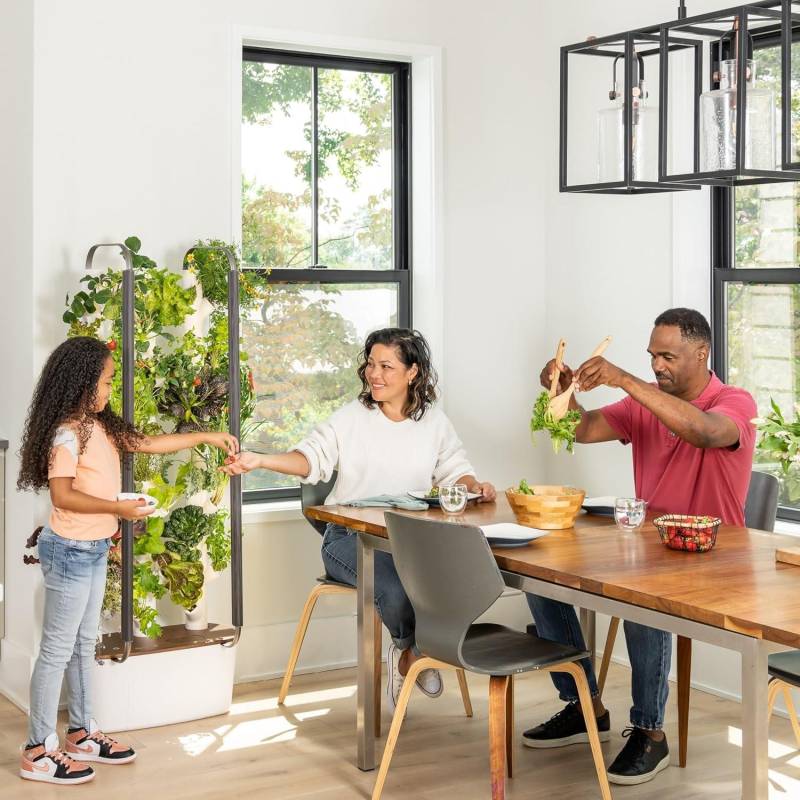
Learn To Garden - Fresh Vegetables Provide Essential Nutrients
This one is more focused on long term preparation since it takes time to start a garden from scratch. However, for those looking to simply maintain a lifestyle that is already prepared for disaster ... vs surviving after it happens, making sure that you have a reliable supply of fresh vegetables and leafy greens is essential to your health.
The Gardyn 3.0 Hydroponics Growing System represents a crucial advancement in emergency preparedness and food security, offering a reliable solution for year-round fresh produce regardless of external conditions. While maintaining a stockpile of shelf-stable foods is essential, the ability to consistently grow nutrient-dense vegetables indoors provides a sustainable long-term food source that can supplement stored foods and ensure access to vital nutrients during extended emergencies. With its compact 2-square-foot footprint, AI-assisted growing technology, and capacity for 30 plants, this system offers an efficient way to maintain a steady supply of fresh herbs and vegetables while using 95% less water than traditional gardening - a critical consideration during emergencies when water resources may be limited.
Essential Tips for Indoor Vegetable Growing Success
- Monitor humidity levels carefully (ideally 40-60%) and maintain temperatures between 65-75°F (18-24°C) for optimal growth of most indoor vegetables.
- Rotate plants regularly to ensure even light exposure from LED grow lights, and maintain the recommended 12-16 hours of daily light exposure for most vegetables.
- Start with easy-to-grow, nutrient-dense plants like leafy greens, herbs, and cherry tomatoes that provide quick harvests and essential vitamins.
- Keep air circulating with a small fan to prevent mold growth and strengthen plant stems, which is especially important in indoor growing environments.
- Maintain consistent nutrient solution levels and pH (typically 5.5-6.5 for hydroponics), checking at least weekly to ensure optimal plant nutrition.
On the other hand, it probably isn't a bad idea to also consider preserved, packaged foods like this Fruit and Veggie kit that has a 30-year self life, or this Breakfast, Lunch, and Dinner Bucket that contains 80 servings and a shelf-life of 25 years!
Ultimately, being able to be self-sufficient is essential for surviving whatever might be coming. By learning how to grow your own food, you can ensure that you maintain a more healthy lifestyle vs being reliant on canned foods for your entire diet. Plus, at least for me, the satisfaction of being able to harvest something I made just brightens my day. Fresh vegetables are special and those moments of joy are going to be very important during dark days!

Emergency Radios To Maintain Communication
Whether it's to stay in touch with your home when you're off hunting and fishing, or to connect with emergency services during a disaster, having a good emergency radio should be part of everyone's survival kit. This is more complicated of a proposition than it sounds though. For instance, I have a couple of CB radios, and those are better than a mobile phone if the network goes down ... but it isn't waterproof, ruggedized, or really good long-range.
On the other hand, we have GMRS and HAM radios that provide better range and interoperability should you need to communicate in a disaster. Here's how the different bands compare.
CB (Citizens Band) Radio
Operating on 40 channels at 27 MHz with no license requirement, CB offers reliable local communication with 1-5 mile range depending on terrain and conditions. Maximum power is limited to 4 watts, and while audio quality can be basic, the equipment is widely available and user-friendly, making it popular among truckers, off-roaders, and local communities.
FRS/GMRS (Family & General Mobile Radio Service)
These UHF services share frequencies in the 462-467 MHz range but differ in power limits and licensing: FRS is license-free but limited to 2 watts with fixed antennas (0.5-2 mile range), while GMRS requires a $35 ten-year license but allows up to 50 watts, detachable antennas, and repeater use, extending range up to 25+ miles with mobile units. Both offer superior audio clarity compared to CB, making them ideal for family, business, and outdoor recreation use. In comparison to a handheld CB, a 5-watt GMRS radio like this one from Rocky Talkie will get between 2-8 miles of range in backcountry terrain.
Amateur (HAM) Radio
The most versatile and powerful option, HAM radio requires tested licensing across three classes (Technician, General, Amateur Extra) but provides access to extensive frequency bands (1.8 MHz - 1.2 GHz), enabling local to global communication. HAM operators can utilize high power limits, access vast repeater networks, communicate through satellites, use digital modes, and play a crucial role in emergency communications, though equipment and licensing requires more initial investment in time and study.
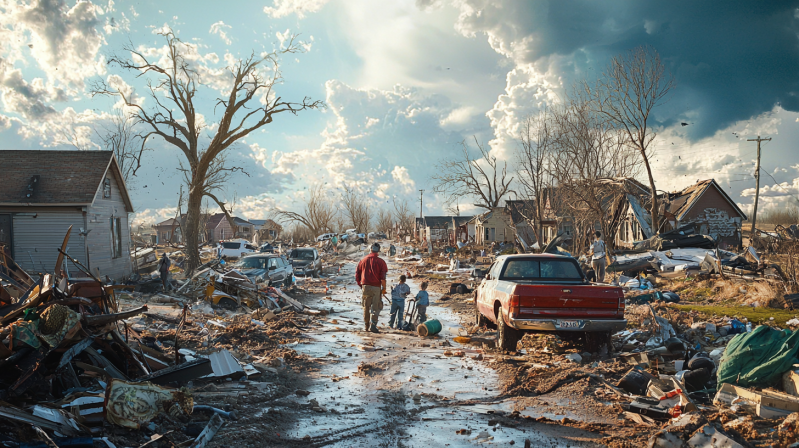
Practical Prepping Is Simply About Being Ready For The Unknown!
I'm not forcasting there to be a revolution where I need to strap on my militia gear and fight for our freedom on the battlefield or defending my home against zombie hordes. The likelihood of a snowstorm, powergrid failure, flooding, or wildfire is far more likely of an emergency to prepare for.
The final piece of advice is to simply educate yourself about the practical parts of living. Learn how to sew, to garden, to cook, and maintain basic home repair and DIY things around the house. These are all things that you will need to know how to do if a disaster strikes and you can't just grab the phone and have someone doordash something.
Having a plan and working to be prepared will also help with mental health. Right now with the election results being decided, there's a lot of people that are nervous about riots and civil unrest. I'm not immune to those concerns but my family is prepared and ready for interruptions should they come. This includes making sure that we have food in the pantry and our gas tanks are full.
I lived through the riots during the pandemic where we saw armed mobs looting and destroying businesses outside our apartment. Now I'm prepared and so I don't have to worry (as much). You can be the same way if you create a plan designed around whatever unknowns might face your family and community!
